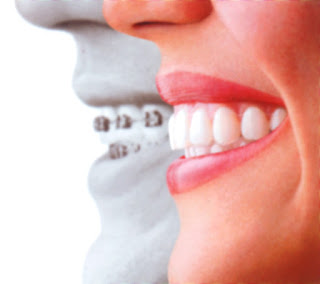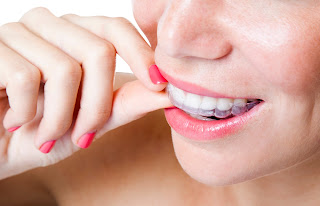 Straight, aligned
teeth are not only healthier, but also better for your confidence. Invisalign
braces give you a youthful appearance and a wonderful smile that is more likely
to get you noticed. A bright smile evokes both warmth and sincerity, and
stimulates the excretion of “feel-good” hormones.
Straight, aligned
teeth are not only healthier, but also better for your confidence. Invisalign
braces give you a youthful appearance and a wonderful smile that is more likely
to get you noticed. A bright smile evokes both warmth and sincerity, and
stimulates the excretion of “feel-good” hormones.
How Does Invisalign Work?
Redesigning the smile
you have become accustomed to since birth to better reflect the person you are
today is an easy and exciting process with the Invisalign system.
Invisalign refers to a
sequence of thin, clear, virtually invisible custom-molded aligners designed to
fit over your teeth and gradually straighten them. Invisalign is a
non-intrusive orthodontic treatment that requires you to wear each set of
aligners for two weeks, straightening your teeth bit by bit. The Invisalign
system usually takes 12-18 months with regular but quick (10-15 minutes)
checkups.
The aligners are
comfortable to wear, and you can take them out for eating, brushing, and
flossing. Unlike braces, Invisalign is practically invisible, which means that
it does not draw unwarranted attention to your mouth. In fact, no one will
notice unless you tell them. The entire Invisalign treatment plan is designed
using 3-D computer imaging technology, so you can view your virtual results to
see how your teeth will look like once the treatment is complete.
Common applications of
Invisalign include:
1. Tooth crowding
The problem tends to
worsen over time, making it more and more difficult to take proper care of your
teeth through brushing and flossing. Because you can’t clean areas with crowded
teeth well, those spots are filled with bacteria that can easily attack the
gums, teeth, and bone if they find a point of entry, like when you injure your
gums through hard brushing. If no remedy is sought, the inflammation can
advance to more severe gum disease that leads to gum recession, bone loss, and
ultimately tooth loss.
2. Misaligned bite
Excess wear on your
front lower teeth may cause your bite to be slightly off. This, in turn, causes
some teeth to meet sooner than others. The resulting stress and flexing can
cause the enamel to separate from the inner dentine, forming an abfraction – a
notch at the gum line. The notches create weak points that cause the tooth to
become compromised and more likely to break or chip.
Final Note
Generally, Invisalign
is used to correct mild to moderate bite and misalignment issues. It will not
only give you a more youthful, attractive, and beautiful smile, but also
deliver more balanced forced, thereby, reducing stresses and trauma responsible
for fractures, bone loss, and tooth loss.
Braces Las Vegas is a certified Invisalign® provider and other forms of orthodontic braces designed to help you achieve the smile you've always wanted. Call us @ 702.660.2256 for more information on orthodontics/

